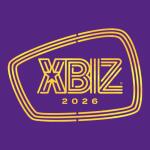In today's conclusion to our series on understanding and increasing the Google PageRank of your sites, we'll take a look at some helpful tips and tricks:
Domain and File Names
To a spider, www.domain.com/, domain.com/, www.domain.com/index.html and domain.com/index.html are different URLs and, therefore, different pages. Surfers arrive at the site's home page whichever of the URLs are used, but spiders see them as individual URLs, and it makes a difference when working out the PageRank. It is better to standardize the URL you use for the site's home page. Otherwise each URL can end up with a different PageRank, whereas all of it should have gone to just one URL.
If you think about it, how can a spider know the filename of the page that it gets back when requesting www.domain.com/? It can't. The filename could be index.html, index.htm, index.php, default.html, etc. The spider doesn't know. If you link to index.html within the site, the spider could compare the 2 pages but that seems unlikely. So there are 2 URLs and each receives PageRank from inbound links. Standardizing the home page's URL ensures that the Pagerank it is due isn't shared with "ghost" URLs.
For example, go to my UK Holidays and UK Holiday Accommodation site (how's that for a nice piece of link text?). Notice that the URL in the browser's address bar contains "www.". If you have the Google Toolbar installed, you will see that the page has PR5. Now remove the "www." part of the URL and get the page again. This time it has PR1, and yet they are the same page. Actually, the PageRank is for the unseen frameset page.
When this article was first written, the non-www URL had PR4 due to using different versions of the link URLs within the site. It had the effect of sharing the page's PageRank between the 2 pages (the 2 versions) and, therefore, between the 2 sites. That's not the best way to do it. Since then, I've tidied up the internal linkages and got the non-www version down to PR1 so that the PageRank within the site mostly stays in the "www." version, but there must be a site somewhere that links to it without the "www." that's causing the PR1.
Imagine the page, www.domain.com/index.html. The index page contains links to several relative URLs; e.g. products.html and details.html. The spider sees those URLs as www.domain.com/products.html and www.domain.com/details.html. Now let's add an absolute URL for another page, only this time we'll leave out the "www." part - domain.com/anotherpage.html. This page links back to the index.html page, so the spider sees the index pages as domain.com/index.html. Although it's the same index page as the first one, to a spider, it is a different page because it's on a different domain. Now look what happens. Each of the relative URLs on the index page is also different because it belongs to the domain.com/ domain. Consequently, the link stucture is wasting a site's potential PageRank by spreading it between ghost pages.
Adding New Pages
There is a possible negative effect of adding new pages. Take a perfectly normal site. It has some inbound links from other sites and its pages have some PageRank. Then a new page is added to the site and is linked to from one or more of the existing pages. The new page will, of course, aquire PageRank from the site's existing pages. The effect is that, whilst the total PageRank in the site is increased, one or more of the existing pages will suffer a PageRank loss due to the new page making gains. Up to a point, the more new pages that are added, the greater the loss to the existing pages. With large sites, this effect is unlikely to be noticed, but with smaller ones, it probably would be.
So, although adding new pages does increase the total PageRank within the site, some of the site's pages will lose PageRank as a result. The answer is to link new pages is such a way within the site that the important pages don't suffer, or add sufficient new pages to make up for the effect (that can sometimes mean adding a large number of new pages), or better still, get some more inbound links.
Miscellaneous Points
The Google toolbar: If you have the Google toolbar installed in your browser, you will be used to seeing each page's PageRank as you browse the web. But all isn't always as it seems. Many pages that Google displays the PageRank for haven't been indexed in Google and certainly don't have any PageRank in their own right. What is happening is that one or more pages on the site have been indexed and a PageRank has been calculated. The PageRank figure for the site's pages that haven't been indexed is allocated on the fly - just for your toolbar. The PageRank itself doesn't exist.
It's important to know this so that you can avoid exchanging links with pages that really don't have any PageRank of their own. Before making exchanges, search for the page on Google to make sure that it is indexed.
Sub-directories: Some people believe that Google drops a page's PageRank by a value of 1 for each sub-directory level below the root directory. E.g. if the value of pages in the root directory is generally around 4, then pages in the next directory level down will be generally around 3, and so on down the levels. Other people (including me) don't accept that at all. Either way, because some spiders tend to avoid deep sub-directories, it is generally considered to be beneficial to keep directory structures shallow (directories one or two levels below the root).
ODP and Yahoo! It used to be thought that Google gave a Pagerank boost to sites that are listed in the Yahoo! and ODP (a.k.a. DMOZ) directories, but these days the general opinion is that they don't. There is certainly a PageRank gain for sites that are listed in those directories, but the reason for it is now thought to be this:
Google spiders the directories just like any other site and their pages have decent PageRank and so they are good inbound links to have. In the case of the ODP, Google's directory is a copy of the ODP directory. Each time that sites are added and dropped from the ODP, they are added and dropped from Google's directory when they next update it. The entry in Google's directory is yet another good, PageRank boosting, inbound link. Also, the ODP data is used for searches on a myriad of websites - making for more inbound links!
Listings in the ODP are free, but because sites are reviewed by hand, it can take quite a long time to get in. The sooner a working site is submitted, the better.
Well, there you have it – everything that you ever wanted to know about Google PageRank but were afraid to ask! Stay tuned for more Google traffic building tips here at XBiz!






